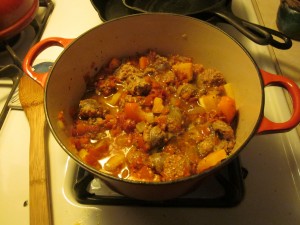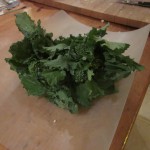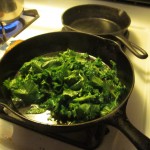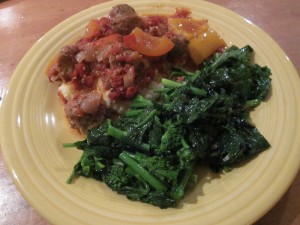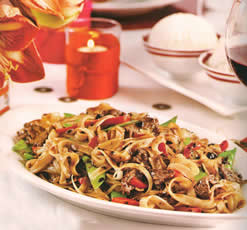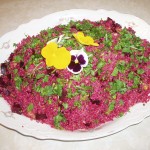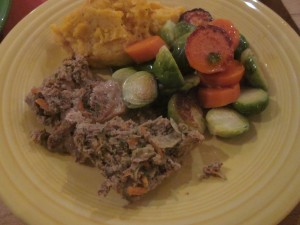
Meatloaf with Carrots and Brussels Sprouts, and leftovers!
As far as I’m concerned, Meatloaf is the perfect comfort food. Not only is it delicious on the first night, but the next day its fabulous crumbled into an omelette with some spinach. For this meatloaf, I mixed ground beef with two of Copari Meat’s delicious mild pork sausages.
1 medium onion, chopped small
2 garlic cloves, minced
1 lb ground beef (I used 0.686 kg)
2 pork sausages (remove the casing)
2 Tbsp Worcestershire Sauce
2 Tbsp apple cider vinegar
2 eggs
2 Tbsp butter (or coconut oil)
1 zucchini, grated
1 carrot, grated
1 stalk celery, chopped small
1 tsp each oregano, basil, parsley, salt, pepper
Preheat oven to 350 degrees F.
Cook onion, garlic, zucchini, carrot, celery in butter in a large heavy skillet over medium heat, stirring occasionally, 5 minutes. Remove from heat and stir in Worcestershire sauce, vinegar, herbs.
In a separate bowl, combine the beef, sausages, eggs with hands. Add in the cooked vegetables and mix together well (use a spoon as it’s hot and I burned my hands!).
Pack mixture into a 9 x 5 inch loaf pan. Bake at 350 degrees F until an instant-read thermometer inserted into center of meatloaf registers 155 degrees F. Let stand 10 minutes before serving. (I found that there was a lot of fat in my meatloaf, so rather than adding any oil to my Carrots and Brussels Sprouts, I used this tasty fat – and it was good).
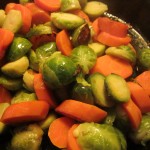
Carrots and Brussels Sprouts
Carrots and Brussels Sprouts
The combination of flavours and textures of these two vegetables work really well together.
3 Tbsps unsalted butter (or use the fat from the Meatloaf – I drained half-way through cooking time)
3 lg carrots, cut into ½ inch thick slices on the diagonal
1 lb Brussels Sprouts, washed and halved lengthwise
Pinch salt and pepper
1 Tbsp apple cider vinegar
1/4 cup water (not necessary if you use the fat from the Meatloaf as it has enough water in it)
In 2 Tbsp of butter, in a heavy skillet over medium heat cook the carrots and Brussels Sprouts with salt and pepper, stirring occasionally until vegetables begin to brown (3 to 4 minutes). Add water and cover skillet and steam vegetables until vegetables are tender (5 minutes). Stir in vinegar and remaining tbsp of butter.
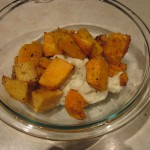
Leftover mashed cauliflower, mashed with roasted squash.
Leftover Medley
I’ll be honest, I find the most delicious combinations when combining my leftovers! The night before we had the Meatloaf we had mashed cauliflower, and for lunch today I roasted some carrots and squash to have with my sprout and green salad. Neither was enough on its own, but mashed together the two were delicious! If I didn’t have leftovers, I probably would have added either some squash or turnip to round out the flavours of this meal – or if you wanted to have a rice-like texture, chop up steamed cauliflower and broccoli into small rice-sized pieces, and they would be perfect!





